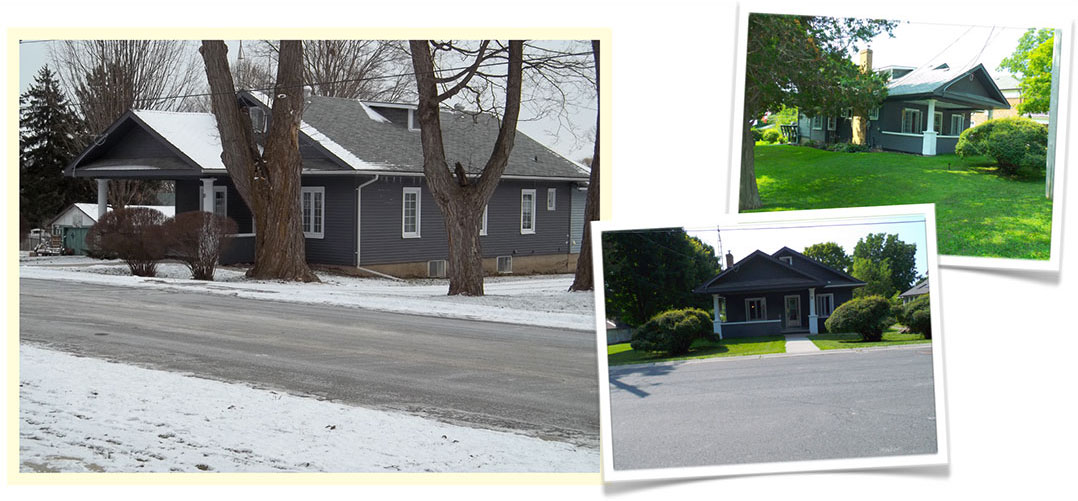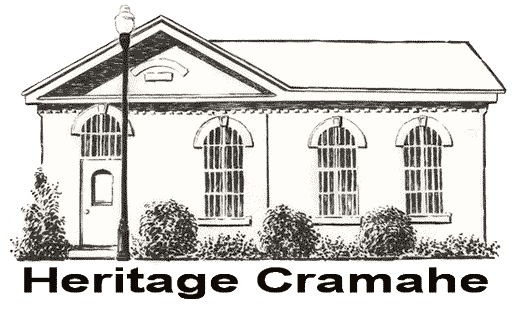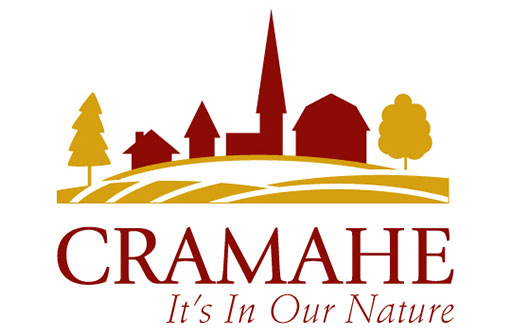10 North Street, Colborne
(1921)
Roll No. 1411-012-020-22900 – Cramahe Township Ontario

Craftsman Cottage
The Arts and Crafts Movement was an international design era that flourished between 1860 and 1910, especially in the second half of that period, continuing its influence into the 1930s. It was led by the artist and writer William Morris (1834– 1896) during the 1860s, and was inspired by the writings of John Ruskin (1819–1900) the leading English art critic of the period and August Pugin (1812–1852), a celebrated architect and critic.
The term “Arts and Crafts” was not coined until 1887, when it was first used at a preliminary meeting of the Arts and Crafts Exhibition Society. The movement developed first and most fully in the British Isles, but spread across the British Empire to the rest of Europe and North America quickly. It was largely a reaction against the perceived impoverished state of the decorative arts at the time and the conditions in which they were produced. It stood for traditional craftsmanship using simple forms and often applied medieval, romantic or folk styles of decoration. It advocated economic and social reform and has been said to be essentially anti- industrial.
It is characterized by: A low pitched roof; Wood, stone or stucco siding; A plain, simple, square footprint; Wide eaves with exposed roof rafters; Thick square columns on the porch; 1 or 1 1/2 stories; Many windows.
No. 10 North Street meets every one of these tests except the exposed roof rafters. It sits on a double lot and it is important to note that the current owners are direct descendants of one of the founding families who opened up this area of Upper Canada, in particular, this area of the village of Colborne.
History or Associative Value
In 1870 Farquhar McRae, George Gordon, Napoleon Bonaparte Daily and his brother Nelson, owned most of the lots that now make up North Street, Colborne, and all of the lots on the South side including what is now the double lot belonging to No. 10. By 1879, Jeremiah Scripture, descendant of one of the founding families, owned the double lot as well as other contiguous properties. It is significant to note that 135 years later, in 2014, the Scripture family still owns and occupies the property at No. 10 North Street.
Additional Historical and Genealogical Information
Cramahe Township, Concession 1, Lot 31, Reid Lot 260
Lot 31, Concession 1, Cramahe Township, was originally set aside as a Clergy Reserves (LINK). Although roads didn’t exist when the lot was surveyed, it consisted of the 200 acres now bounded by on the north by King St., on the west by Division St., and on the east by Elgin St. The southern boundary is now in the middle of the Ogden Point quarry. This clergy reserve included much what was to become the southern part of modern-day Colborne.
Although the Clergy reserve system wasn’t to end until 1854, the northern half of Lot 31, including all of the land in the reserve that is now part of Colborne, was granted by the Crown to Joseph Abbott Keeler (1788-1855) (LINK) on 12 April 1842.
On 23 September 1854 Joseph A. Keeler transferred his 135 acres in Lot 31 to his son Joseph Keeler III (1824-1881) (LINK). Joseph Keeler and his wife Octavia (née Phillips, 1827-1899) mortgaged the property with the Commercial Bank of Canada on 29 March 1855.
On 5 May 1863 the Commercial Bank of Canada sold Lots 260 and 264, as well as Lot 250 on the other side of North St., to Farquahar McRae. (1832-?). McRae was listed in the 1861 census as a boot and shoe maker and farmer, in 1871 as a merchant, and in 1881 as a clerk. He probably lived in the house that is now at 5 North Street (Link).
On 15 March 1879, Farquhar McRae sold lots 260-264 to Jeremiah Chauncey Scripture (1851-1937) and Stephen Henry Scripture (1853-1915). Jeremiah and Stephen Scripture were sons of Simeon Liberty John Scripture, who in turn was the son of original Cramahe immigrants Jeremiah and Submit Scripture. Stephen was variously listed in censuses as a machinist, general agent, and carpenter; Jeremiah as machinist and farmer. Stephen would later (16 February 1885) transfer his rights to the properties to Jeremiah. Both brothers were unmarried at that point, but Jeremiah would later (1894 and 1896) have two children, Simeon and Charles. If Jeremiah lived on one of the properties, his children and his wife Gretta would undoubtedly have lived there with him.
The next series of transactions concerning Lots 260-264 are a bit confusing. On 9 April 1885, Jeremiah Scripture mortgaged the properties with the London Canadian Loan and Agency Company. On 29 May 1890 that company granted the land to a group of Colborne men who were referred in Land Office Records as “Trustees Methodist Church Trustees Parsonage”. The instrument was worded as “grant under power of sale”. Apparently the Methodist Church controlled these properties until they returned them to Jeremiah Scripture on 3 January 1898. Was the property used as a residence (“parsonage”) for the Methodist pastor during that time?
Scripture continued to own the property through 1921.
Residency on this property is unclear. All of the owners simultaneously owned other properties in Colborne. Farquhar McRae probably lived across North Street at 5 North Street. Similarly, sale prices are of little use as evidence for the age of the house. All sales included other properties.




